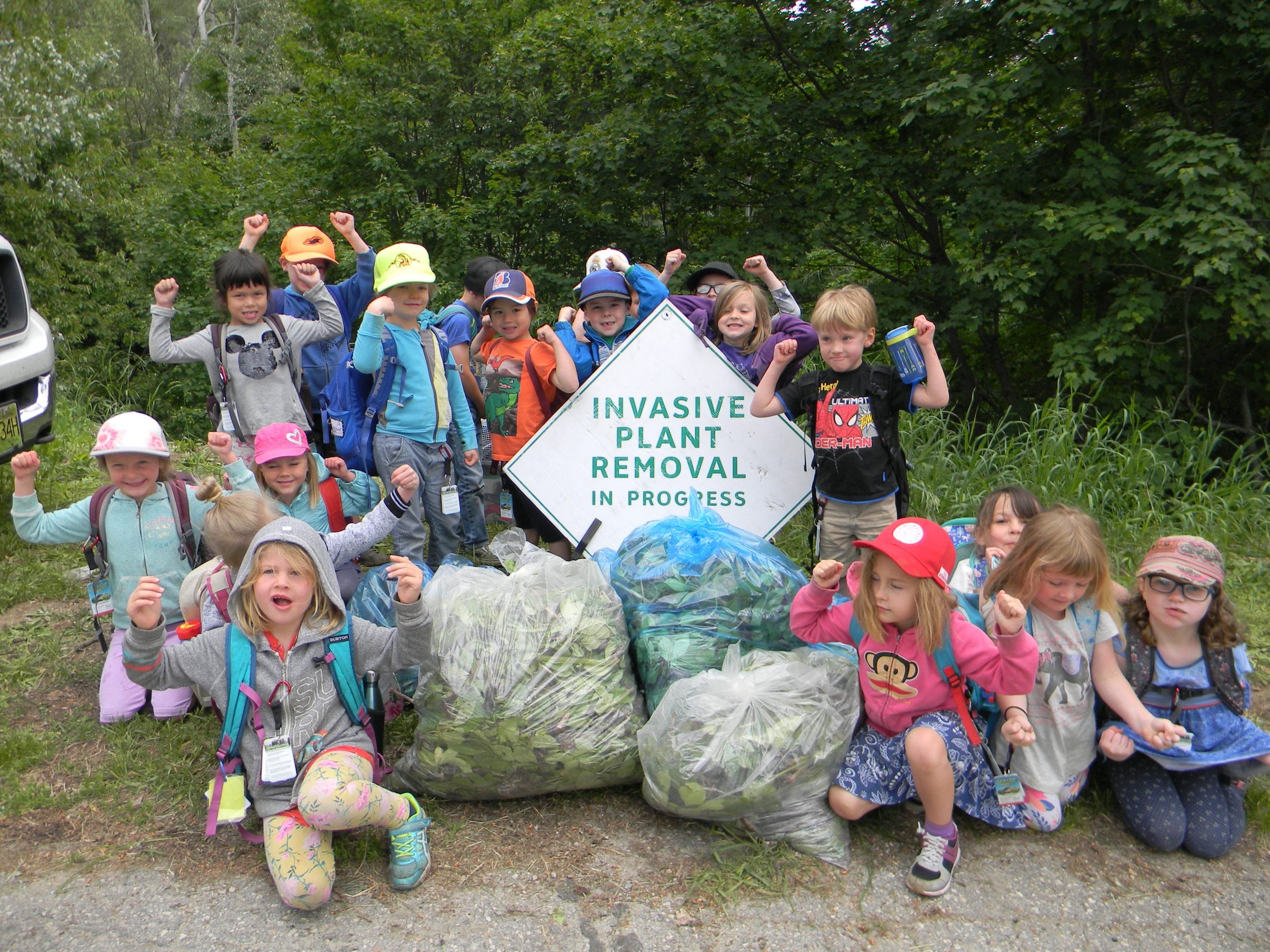It's time to go after invasive weeds.
Some ask, “What’s so bad about those so-called invasive species? Some of them are so pretty!”
Yes, they’re pretty. One example is Himalayan Balsam, also known as “Policeman’s Helmet.” It has beautiful flowers. And it grows SO easily!
The trouble with it is . . . it grows SO easily. It wants to take over the world. It will crowd out native plants that our local wildlife depend on, and quickly become a flourishing and very large monoculture. In a just a very few recent years, Himalayan Balsam has demonstrated its dominating ways locally.

Another example is Orange Hawkweed, very common in this area. So pretty! And so very difficult to get rid of, once established and taking over everything in sight. It spreads not only by seeds, but also by rhizomes that creep along the ground and sink more roots into the soil as they go.
These are only two; there’s a long list of invasive weeds in our area.
May is Invasive Species Action Month in BC. It’s a good month for action against invasives, because it’s when they start growing, and before many of them flower and go to seed. Recognize young Spotted Knapweeds plants? It’s a good time to dig them out. Wear gloves.

(Above: young knapweed plant. Photo by R. Mueller.)
To help get everyone possible active in combatting the spread of invasive weeds, the Central Kootenay Invasive Species Society (CKISS) will be coordinating a variety of local events, training workshops and community weed pulls in order to spread the word — not the weeds!
Communities Pulling Together invasive plant pulls need to be coordinated between the participating volunteer group and respective regional invasive plant committee. Please refer to the committee responsibilities below. Regional Committees that take part in weed pull events will receive a $200 stipend.
Steps to Hosting a Weed Pull Event
- Ensure the volunteer group meets event criteria;
- Select the site;
- Arrange plant disposal;
- Supply garbage bags, gloves, and refreshments for participants;
- Provide information on how to identify and remove invasive plants;
- Supervise the event to ensure all plants are removed correctly;
- Enter the invasive plant information into the IAPP program;
- Complete and submit CPT Weed Pull Report, invoice, and volunteer evaluation forms.
Invasive species threaten BC’s environment, economy and society, including human health, but stopping invasive species is possible if we take action now to prevent, detect and manage invasive species.
“Human behavior is the number one way that invasive species are introduced. People spread them through the horticulture industry, the pet trade, moving firewood and by ‘hitchhiking’ on watercraft, clothing, vehicles and even your pet!” says Laurie Frankcom, CKISS Education Program Coordinator.
“Prevention is the most effective tool when it comes to invasive species management. CKISS will be travelling throughout the West and Central Kootenay region this spring educating the public on simple actions they can take to prevent the spread. Outreach activities include setting up our booth at community events, working with school and volunteer groups on weed pulls and conducting professional development workshops for municipalities and industry” states Frankcom.
All across BC, Invasive Species Action Month is being celebrated and promoted. Youth groups are challenged to enter the “What’s In My Backyard?” (“WIMBY”) photo contest using the hashtag #BCinvasivescontest for the chance to win cash prizes. Visit the Invasive Species Action Month website at bcinvasivesmonth.com. to read about the contest and information about how to prevent and stop the spread of invasive species in gardens, parks and forests, through sporting and camping activities, in lakes, rivers and oceans, and in cities, towns and across the province. There are links to events and activities being held by CKISS and other organizations across BC.






















